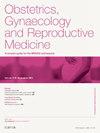男性不育症的治疗
Q3 Medicine
Obstetrics, Gynaecology and Reproductive Medicine
Pub Date : 2024-02-29
DOI:10.1016/j.ogrm.2024.02.003
引用次数: 0
摘要
男性因素导致的不育是试图生育的夫妇中最常见的单一不育原因。本文总结了男性因素不育的病因、分类和治疗方法。男性不育的病因可根据潜在病理大致分为睾丸前病因、睾丸病因和睾丸后病因。详细的病史和检查是确定病因的关键。男性不育的治疗方法因病因而异。治疗方法包括改变生活方式、药物治疗、手术治疗、手术取精后辅助生殖。本文章由计算机程序翻译,如有差异,请以英文原文为准。
Management of male infertility
Male factor infertility is the commonest single reason for infertility in couples trying to have children. This article summarizes the aetiology, classification, and management of male factor infertility. The cause for male infertility can be broadly classified into pre-testicular, testicular and post testicular causes depending on the underlying pathology. A detailed history and examination are crucial alongside investigations to delineate the cause. The management for male infertility varies depending on the cause of male infertility. Treatment includes lifestyle modifications, medical management, surgical management, and surgical sperm retrieval followed by assisted reproduction.
求助全文
通过发布文献求助,成功后即可免费获取论文全文。
去求助
来源期刊

Obstetrics, Gynaecology and Reproductive Medicine
Medicine-Obstetrics and Gynecology
CiteScore
0.90
自引率
0.00%
发文量
67
期刊介绍:
Obstetrics, Gynaecology and Reproductive Medicine is an authoritative and comprehensive resource that provides all obstetricians, gynaecologists and specialists in reproductive medicine with up-to-date reviews on all aspects of obstetrics and gynaecology. Over a 3-year cycle of 36 issues, the emphasis of the journal is on the clear and concise presentation of information of direct clinical relevance to specialists in the field and candidates studying for MRCOG Part II. Each issue contains review articles on obstetric and gynaecological topics. The journal is invaluable for obstetricians, gynaecologists and reproductive medicine specialists, in their role as trainers of MRCOG candidates and in keeping up to date across the broad span of the subject area.
 求助内容:
求助内容: 应助结果提醒方式:
应助结果提醒方式:


